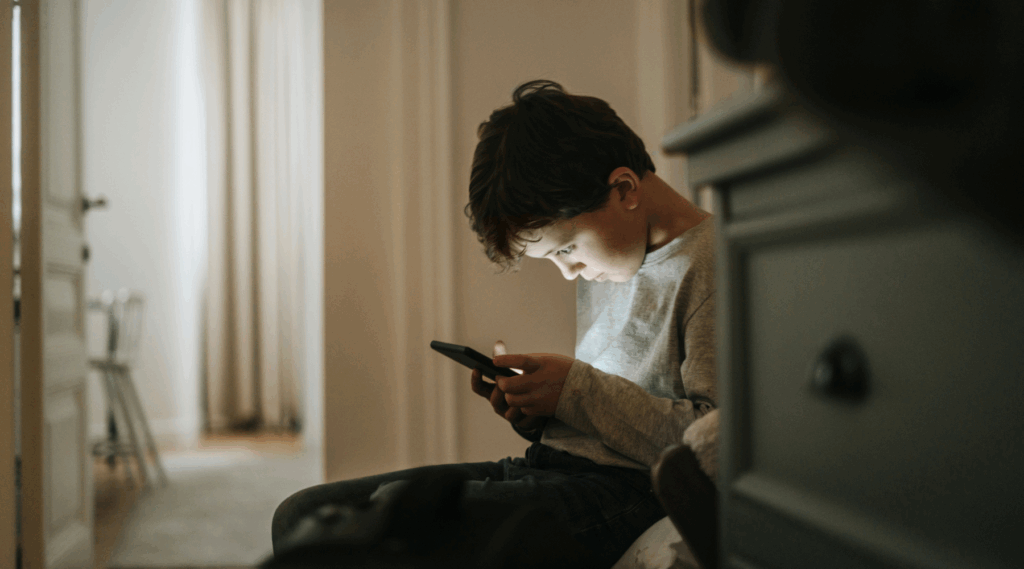Co-Parenting & Screen-Time
Screen time is one of the toughest issues modern parents face, and for divorced or separated parents, it can become a major source of conflict. With kids now juggling everything from smartphones to gaming consoles, deciding on healthy limits is no longer as simple as turning off the TV. California courts encourage co-parents to keep the child’s best interests at the center of these discussions, but differing opinions and comfort levels often complicate the process. Clear agreements, backed by research and best practices, can help prevent constant disputes while protecting a child’s health and well-being.
Co-Parenting & Screen-Time
Screen time is one of the toughest issues modern parents face, and for divorced or separated parents, it can become a major source of conflict. With kids now juggling everything from smartphones to gaming consoles, deciding on healthy limits is no longer as simple as turning off the TV. California courts encourage co-parents to keep the child’s best interests at the center of these discussions, but differing opinions and comfort levels often complicate the process. Clear agreements, backed by research and best practices, can help prevent constant disputes while protecting a child’s health and well-being.

If screen time is turning into a battleground in your co-parenting relationship, you don’t have to navigate it alone
For parents who grew up when personal computers were relatively new and before cell phones were ubiquitous, managing their children’s relationship with screens can be a confounding issue. Where once limiting screen time might have been focused on how much TV was appropriate, now the devices a child might have include computers, tablets, gaming consoles, smartwatches, smartphones, and more, potentially giving them access to a complex array of websites, social media platforms, and games. While most parents would agree that a child’s screen time ought to be limited, knowing what those limits should be is another question.
The situation becomes more complicated for co-parents, who may have different comfort levels with screen time, different opinions on how much screen time is too much, and different approaches to guiding and monitoring the children’s digital media use. While professional recommendations regarding screen time rules for school-age children are not as clear-cut as those for babies and toddlers, there is still ample guidance for best practices, as well as research documenting the deleterious effects that too much screen time can have on developing bodies and brains. Keeping the child’s best interests at the center of discussions is essential for determining a co-parenting plan that effectively safeguards the child’s safety and well-being rather than setting up an endless cycle of disputes.
Age-Appropriate Screen Time for Older Children and Teens

In a child’s earliest years, the American Academy of Pediatrics’ guidelines for screen time include strict limits based on the amount of time a child is watching media, but this is not the case for older children. In 2016, recognizing the complexity of digital media use among kids of different ages, the organization updated its media use recommendations to focus on the quality of children’s screen use rather than the quantity. Similarly, the American Academy of Child and Adolescent Psychiatry’s basic guidance for children ages 6 and up is to “encourage healthy habits and limit activities that include screens.”
This lack of hard-and-fast screen time rules for school-age children may be frustrating for parents, but it accurately reflects that not all screen time is equally good or bad. For instance, a ten-year-old mindlessly scrolling YouTube videos is not spending their time in the same way as a teen watching tutorials to learn how to knit, or even another ten-year-old playing a cooperative session of Minecraft with their friends. Instead, parents are urged to take a more nuanced approach, including:
- Teaching (and modeling) desirable behavior around screen time as well as online safety
- Familiarizing themselves with and communicating about the types of media their children are using
- Ensuring that screen time is not displacing healthy habits such as physical activity, in-person socialization, and getting enough sleep
- Setting up sensible boundaries around the use of digital media through the use of parental controls
While this type of approach is more demanding for parents, research shows that family technology rules based on content, balance, and communication are associated with better health and well-being than rules based on screen time limits alone.
Why Screen Time Limits Remain Important for Older Kids
Unfortunately, the fact that children can use digital media for positive purposes is counterbalanced by a great deal of research associating excessive screen time with serious negative effects on their physical and mental wellness. Research has associated increased screen time with a greater likelihood of obesity, sleep disorders, and mental health issues such as anxiety and depression. In addition, a higher use of digital media is associated with poorer executive function and academic performance. The use of social media in early adolescence is associated with the development of depressive symptoms, and excessive screen time can also contribute to physical problems such as nearsightedness and neck pain.
School leaders have also noted the negative effects of cell phone use in academic settings, with recent findings from the National Center for Education Statistics showing that a majority of public school leaders feel that cell phone usage has negatively impacted students’ academic performance, mental health, and attention span. In response to the sense that cell phones create distractions and discipline problems in the classroom setting, an increasing number of states, including California, have enacted laws that completely ban or limit cell phones in schools. Exact policy details can differ according to school district; the Santa Clara Unified School District, for example, has adopted a Phone and Device-Free Schools policy as of the 2025-2026 school year that requires students to store mobile devices such as cell phones, smartwatches, and earbuds in a Yondr pouch for the duration of the school day.
Establishing Tech Boundaries in Shared Custody

The challenge of setting consistent screen time and media use limits for children is compounded in a shared custody situation, where each parent may have different opinions on what is acceptable and doesn’t always see what their child is doing online. Nevertheless, it is essential to tackle the issue proactively—otherwise, parents can end up remediating problems they did not anticipate and attempting to correct behavior that might have been prevented.
Creating a digital parenting plan as part of the divorce settlement is helpful in setting mutually shared expectations that provide stability for children across households. Among issues that should be discussed are when children will be allowed to own certain types of devices (getting a cell phone in middle school versus high school, for example), required device-free times such as before bedtime, and the use of parental controls to restrict access to age-appropriate content. Parents may also want to consider the use of tracking apps that enable them to monitor or limit their children’s online activity; for example, Apple’s Screen Time and Google’s Family Link allow parents to set screen time limits, block inappropriate content, and monitor usage on iOS and Android devices, respectively.
Keeping discussions focused on the desired outcome for their shared children can help co-parents find middle ground even when they don’t agree, and a written plan helps to ensure accountability across households. A consistent approach can also minimize the extent to which children push the limits with each parent. Given the complexity of the issue, the assistance of an experienced family law attorney can be invaluable in drafting a digital parenting plan that is robust enough to address today’s needs but flexible enough to anticipate tomorrow’s.
Expert Legal Guidance for Child Custody Issues in Silicon Valley
When contentious issues like screen time rules turn into an endless battleground for co-parents, their children are inevitably the ones who suffer the ill effects. At Hoover Krepelka, our attorneys are skilled at helping families find effective solutions focused on their children’s long-term well-being and work diligently to enforce the agreements meant to protect it. To schedule your consultation, fill out the form below today.
Reach Out To Our Expert Attorneys Today
"*" indicates required fields
FAQS
What is the recommended screen time for school-age children?
California experts recommend focusing on the quality and balance of screen use rather than strict time limits, ensuring that digital activities don’t interfere with sleep, physical activity, or in-person socialization.
How do co-parents enforce consistent tech rules in separate homes?
Co-parents can create a digital parenting plan that sets shared expectations for device use, parental controls, device-free times, and monitoring tools, helping maintain consistency across households.
What are the new school policies around phones starting in 2026?
Many California school districts, including Santa Clara Unified, will require students to store mobile devices in pouches or otherwise restrict usage during school hours to reduce distractions and support academic and mental health.

